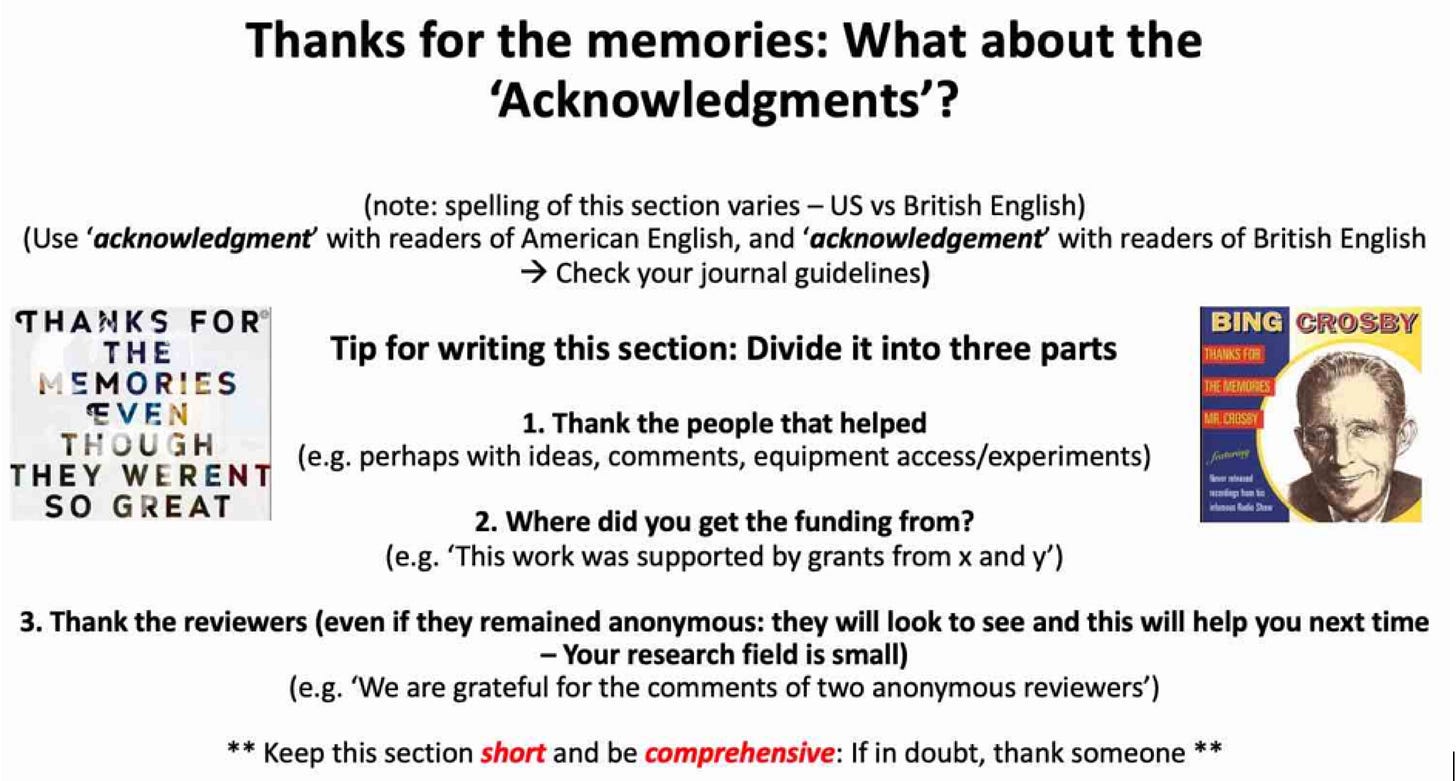Thanks for the memories: Writing a concise and effective Acknowledgements section
Who (and what) to thank at the end of your paper? This is actually quite a hard section to write. Have a think about who helped, who supported (grants), any equipment/facilities, and: Reviewers! ...
One question I received recently in a webinar was ‘who should I thank at the end of my paper’? Who and what to include and not? How can you easily and effectively write this all important ‘Acknowledgements’ section?

This section is important for a number of reasons. Often, readers (especially those who know you and your work) will check this section to see if their name is included– perhaps a colleague read your work and made comments, or was involved in helping with data collection or analysis? Perhaps someone from the agency that funded your work.
Key rules to follow when writing these section are:
-Keep them as short as possible (around 100-150 words is a guideline) but;
-Make them as comprehensive as possible.
Some journals actually auto-fill these sections during the submission process, and if you are in this group; good news. You’ll be asked during online submission to enter your funding sources and identify any conflicts of interest, for example.
One good approach to constructing these sections is to make a list:
-Colleagues who helped with the study in some way or other (e.g., data collection or analysis, advice on techniques, access to equipment or reagents);
-Colleagues or editors who worked on the text, perhaps commenting on the English or overall content before submission, and;
-Any sources of funding or institutions that supported the work (perhaps you received a government or international grant for the research, or it involved a student stipend payment).
As with all aspects of our academic writing, we can learn from those who have come before: Check recent papers published in your field to see how others write their ‘Acknowledgements’ section. Who did they include and in which order? You’ll quickly notice that these sections do tend to follow a similar structure, broadly corresponding to the list above: Who helped and read the paper? How was the work funded? Thanks to the peer-reviewers.
It’s important not to forget to mention this last set of colleagues in your Acknowledgement section when revising your paper for re-submission after peer-review. It’s standard practice and very common for authors to include a vote of thanks to these colleagues (even if they remain anonymous) as they have more than likely given up their time to work on your paper and perform peer-review without any payment or other incentive for their services. Acknowledgement sections of academic papers very often end with sets of phrases like ‘We thank Dr. X and the two other anonymous reviewers of our article for their helpful comments on our work’.
Thanking your peer-reviewers at the end of your article is important for a number of reasons:
-They will check to ensure you have done this when your paper is returned to them after the first round of review. You want to ensure that they are as positive towards your work as possible;
-The journal editor will also likely check this section and so being comprehensive and magnanimous is a good way to show that you’ve taken the peer-review process seriously. You want your editor to feel that you appreciate the comments of others on your work.




